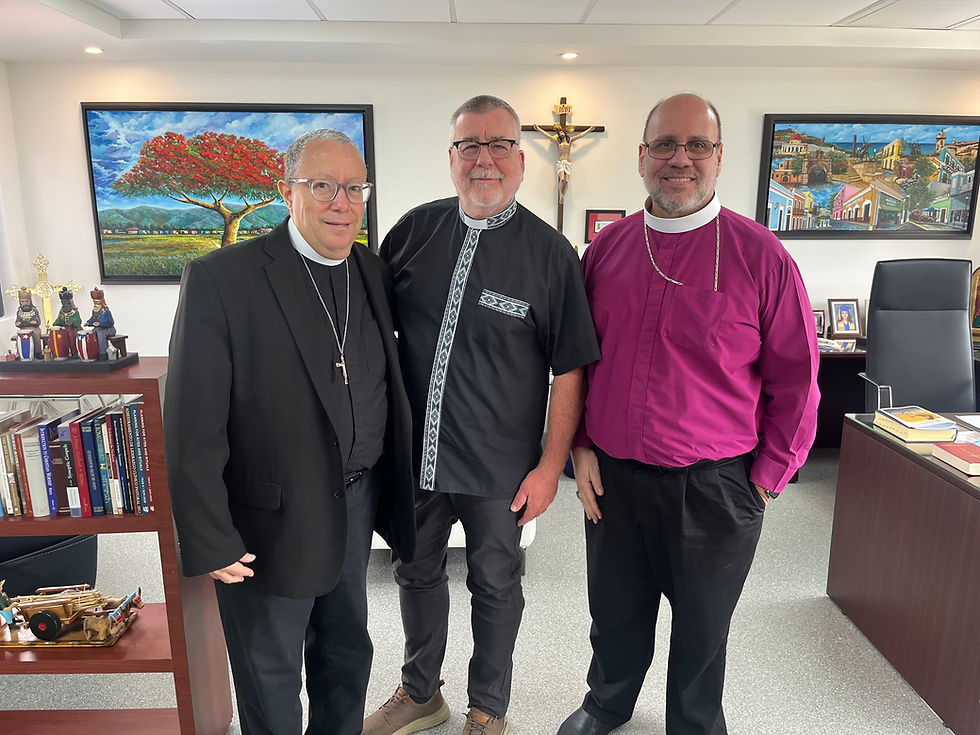St. Luke's installs water system at Santa Cruz del Norte
- Rusty Martin
- Jan 19, 2019
- 4 min read
This is the third in a series of articles on the involvement of St. Luke’s Parish Darien in Cuba. The first described St. Luke’s first visit to Cuba in 2014 when, at the invitation of Bishop Giselda, a delegation from our church visited episcopal parishes throughout Cuba.
The second visit to Cuba occurred last April when a smaller St. Luke’s group (including a member from the Episcopal Church Greenwich) established a sister-church relationship with the Episcopal Church in Santa Cruz del Norte, about an hour east of Havana. At the beginning of this second visit St. Luke’s talked about its mission to Cuba until we realized that we were receiving more from the Cuban Episcopal Church than perhaps they were from us. For example, the Cuban church is growing in terms of children and young people while the American church is not to the same degree. In fact, the Cubans were also performing a mission to us!

The third, and most recent, trip took place this past November when, building on our sister church relationship with Santa Cruz del Norte, we installed a clean water system in the church courtyard to be used not just by the church but the entire city. Water in Cuba is not potable so Cubans must either drink bottled water (relatively expensive) or risk their health by drinking raw water out of the tap which contained bacteria and other bad things. Joining the group of five St Luke’s parish members led by Susan Martin (who is fluent Spanish) was Michael Pollock, a Cooper Union- trained mechanical engineer and a member of the Episcopal Church in Bronxville who is known in Cuba as the “Johnny Apple Seed” of clean water since he has established several clean water systems around the country.
Perhaps the biggest challenge our group faced was getting the Canadian- made Viqua UV Water Filter System (cost $1800) through customs at JFK airport in New York. Transported in two large cases, we were carrying bronze joints, gauges, and piping that could easily have passed for a sophisticated bomb. But by working in advance with the Transportation Security Administration we got the package loaded onto our plane. We also gave advanced notice to the Cuban authorities at Jose Marti Airport in Havana and we were soon on our way to Santa Cruz del Norte.

In preparation for our arrival, a team of electricians and plumbers under the direction of Juan Pons (who is working on the almost completed renovations of the Episcopal Cathedral in Havana funded by Trinity Church on Wall Street) had laid pipes connecting the city water system on one side the of the church to a cistern on the other. The cistern, located in a courtyard, stands atop a forty feet foot high platform to which the raw city water is pumped. By gravity this water would flows down pipes into the Viqua UV Water Filter located in a small shelter at one end of the courtyard. The raw water passes through a series of filters and then under an Ultra violet light producing clean water which is accessed by two faucets on the other side of the shelter facing the court yard.

Under the direction of Michael Pollock, this system was assembled by Pedro Torres, a Havana-based electrician, and Al Briganti and Chip Weismiller two St. Luke’s parish members with some experience with plumbing. Critically important, now that the water is available to the public is the church’s ability to test it once it exits the purification system to ensure that there aren’t any lingering bacteria. Fortunately, the treasurer of the parish is Pedro Rubio, an analytical chemist at Havana Club, Cuba’s only producer of rum and Santa Cruz del Norte’s major employer. Havana Club draws its water from the same water source the church does.

When finished, the gratefulness of the Santa Cruz congregation was palpable. The total cost, including equipment, plumbing, and the labor was only $5,000, well within the means of most American Episcopal churches.
Installation of the water system is the first of several projects St. Luke’s has agreed to take on. After our first visit to Santa Cruz (during which we brought with us much needed over-the- counter medicine) and at the suggestion of Father Frank Fernández, the rector, we equipped the church with baseball equipment as a great way for the church to attract young people. Working with Father Frank and Pepe Bringus, Bishop Griselda’s representative in Havana, St Luke’s now hopes to raise about $40,000 needed to replace or rebuild the church’s roof which has been severely damaged by numerous hurricanes.
What do we at St. Luke’s get from this? The answer is simple: Huge joy in knowing that we are helping a sister church and its congregation not only survive the ravages of poverty but also enabling it to grow and realize its full potential. Meanwhile we have learned a thing or two about how we can reenergize our youth programs. Perhaps St, Luke’s needs a baseball team as well!
On our last evening in Cuba our group went to dinner at our favorite restaurant, Vistalamer, overlooking the Straits of Florida. Across the room from us was a large group of Americans who peaked my interest so I went over to talk to them. They were a group of Reformed Jews from Long Island visiting Cuba with their Rabbi, scoping out how they might support Havana’s two synagogues. I noticed at Santa Cruz del Norte, that one of the plumbers working on our project, wore a yamaka. I told them about our water purification project and passed on Samuel Cohen’s name.






Comments